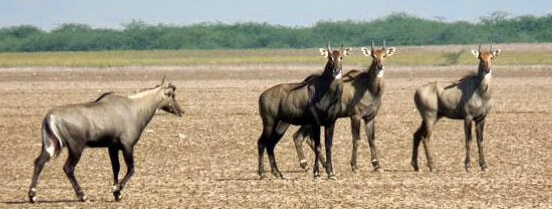
Estimated reading time: 11 minutes
Nilgai have a reputation of being tough and hard to put down. Their wariness causes some to be reluctant to actively hunt them, instead they snipe them from a distance. Neither of these things is gospel and set in stone. As I sit in clumps of brush with game around me, I wonder. Is there embellishment in the stories? Do people just not want to actually hunt them? Is it easier to just drive around and shoot from a vehicle?
Maybe I just happened to be very lucky, maybe cow Nilgai are dumber than bulls. Except that there were 6-8 bulls that strolled by at 80 yards, while I stood on a dirt road. Had I been able to take a bull, I’d have had more opportunities than for the cow. Perhaps, I am simply more determined to sit in +100-degree heat to successfully harvest my first Nilgai. If I had simply driven around like what seems to be the popular method of taking a Nilgai. Then, yes ranges in excess of 200 yards and farther would be the norm. The cows and bulls both seem to know what a vehicle means. Any still sightings were followed by a turn and run, short seconds after stopping.
How I Ended Up Hunting Nilgai
A good friend leasing the property is allowed guests and invited me to take a cull Nilgai. I had only been on the property for five minutes when I saw a small herd of cows, calves, and bull Nilgai. Things were looking promising and the hunt hadn’t actually started. Nilgai bulls can run up to 600+ pounds, the cows at 220 to 450 pounds or so. Utilizing proper bullet selection and placement, I’d think any caliber suitable for elk would be fine.
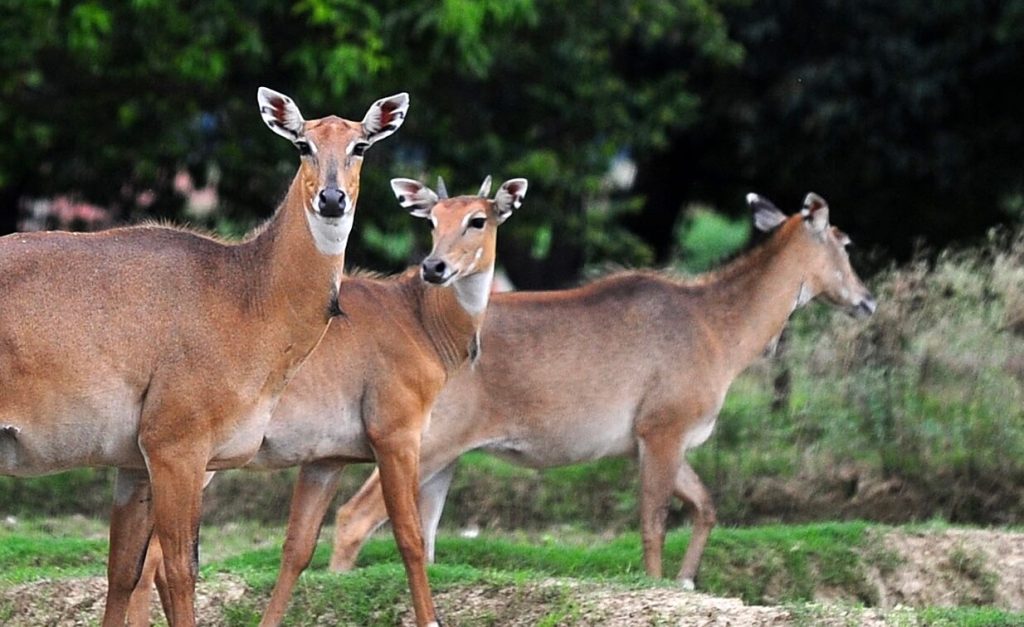
Setting Up For The Hunt I am limited to only females, so identification is absolutely necessary. Bulls can be easy to ID because they are a grayish-blue color while the cows are a more dusty brown color. Young bulls are the same dusty brown color, so checking for horns verifies sex. Not an easy thing to do when you are in a vehicle, and the animal is 100+ yards away, and won’t stop moving. So I decided to use the tall brush as a blind and sit at some likely water holes.
Our wind is predominantly out of the southeast. To keep from sitting in the sun, two separate spots are necessary. One for morning use, daylight to 10 am, and one for evening use 6:30 pm to dusk. We used the rest of the day to scout other areas and locate waterholes. The midday heat would rise to almost unbearable levels. We actually drove up on a herd of 12-15 feral pigs lying in a pond, asleep.
Hunting from ground brush over water holes and utilizing the prevailing wind allowed for much closer distance shooting. Many of the situations were 150 yards and less, one of the water holes allowed shots to almost 300 yards. Due to the Nilgai’s toughness reputation. I was reluctant to try a longer-range shot if cover was close and easy for the Nilgai to enter. Specifically, because my chosen gun for longer distances was a single shot. Which required taking my eyes off of the animal to attempt a second shot.
Getting the lay of the land
We spent the first afternoon searching for water holes that actually held water. My OnX app showed plenty in the area but none actually had water in them. We did a systematic sweep of the property starting on the east side of the property and moving westward. After covering half of the property we finally found some natural waterholes. This ranch consists of about 10k acres. We were allowed to be on about 6000 of them. There were a few cisterns with water but ponds with water were few and far between. This was actually a good thing, it made water a valuable asset for locating animals.
Our first selected spot for sitting and waiting was a good one but we got to it late. So rather than walk in and disturb the area we chose to park and sit in the truck. In the two hours we were there, 8 Nilgai bulls came in from various directions. Followed by a herd of about 15 Javelina, and several whitetail deer with a couple of nice bucks in velvet. Three Nilgai cows came in but remained screened by some light brush. They would never clear into the open to present a shot.
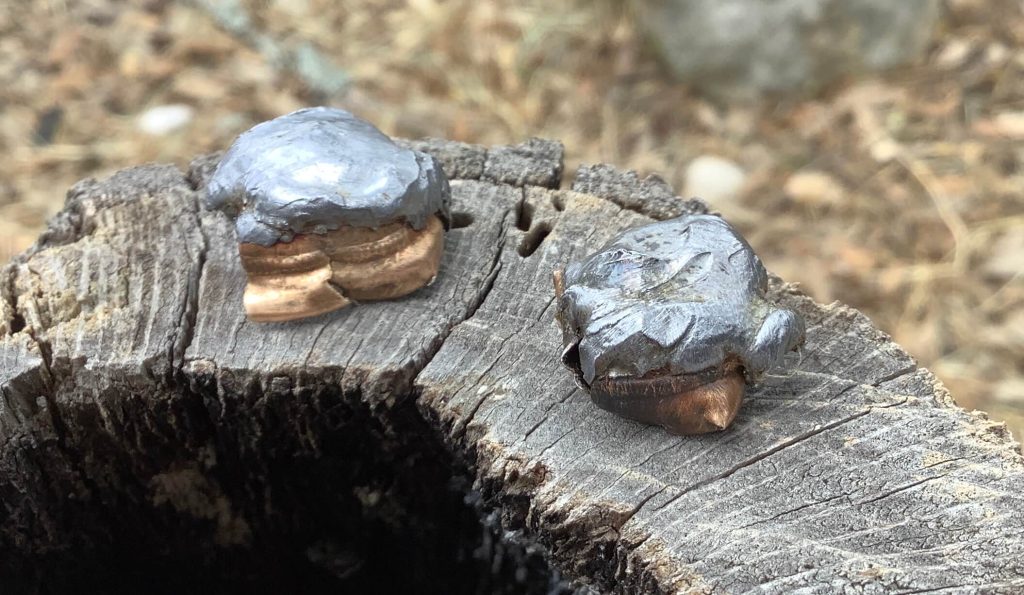
Using conditions to my advantage
We left that spot for the next evening since hunting it in the morning would put the sun in our faces. The new spot in the morning would have us overlooking a large area that should have had 3 large ponds. The ponds had about 13 acres of water surface area and 50 acres of open grassland. However, current conditions had shrunk the water to about an acre total, which brought the animals into a tighter cluster. I walked down the road to our chosen sitting spot 6-8 nice Nilgai bulls were strolling across the open area. They walked out in the open 80 yards away, oblivious to me. We set up and spent the morning watching deer and a nice blackbuck ram with his two does.
More Nilgai were at the other end of our 50-acre savanna. After we packed up at the end of our morning we eased over to take a better look. I spotted a pair of Nilgai calves when I got closer, more like teenagers than young fawns. Each looked to be about 150 pounds, with one a female and one a male. The cow was nowhere to be seen, so we spent a few minutes glassing. She was found mixed in with the cattle that were eating the lush greenery. I grabbed my Merkel 7x65r, and eased over into a strip of mesquite to try and get closer. She had been ranged at over 300 yards, and I wanted 200-250 yards.
Missed opportunities
Just as I got into position she turned and calmly walked away and into the heavy brush. She turned broadside just as she made the cover. I didn’t want a shot at 260 yards with her standing just inside cover and able to disappear in 2 steps.
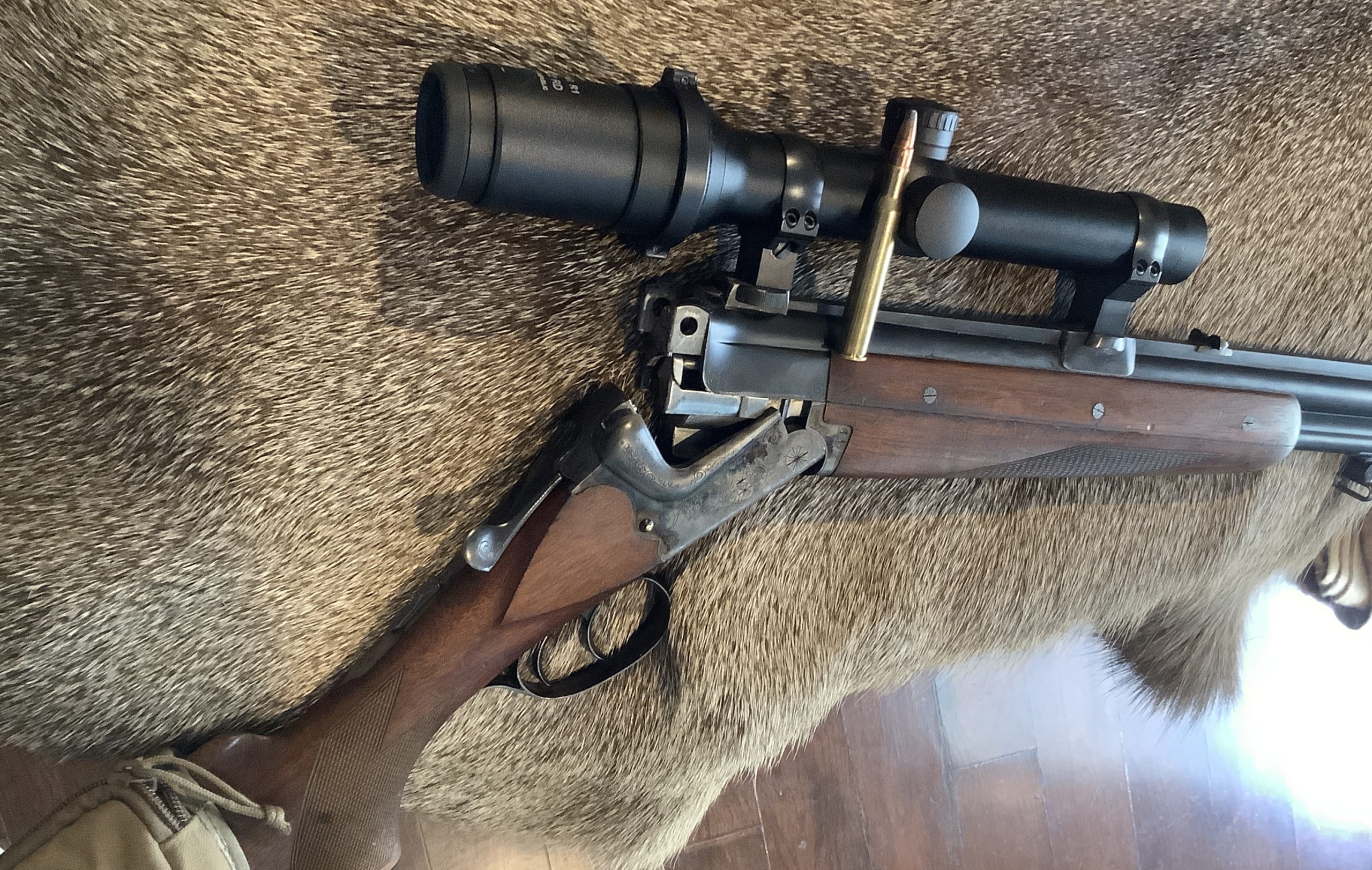
We would leave there and go prep our evening sitting area with chairs and clip limbs for shooting lanes. The area was about 5 acres total with the farthest shot around 275 yards. The water surface area being about 50×20 yards, should help keep animals clustered. The previous evening animals came into the water hole from all directions. The thin strip of brush that had hampered me from getting a shot was dealt with. This time we selected our spot so that a clear view of all entry trails was possible. I decided to take both my Merkel and my Marlin since a 200+ yard shot was possible. My preference would be to take the shot with the Marlin. I wanted to see firsthand how the 240gr. ammunition would perform. As well as the punch of the big bullet and the rapidity of a follow-up shot.
Ammunition And Gun
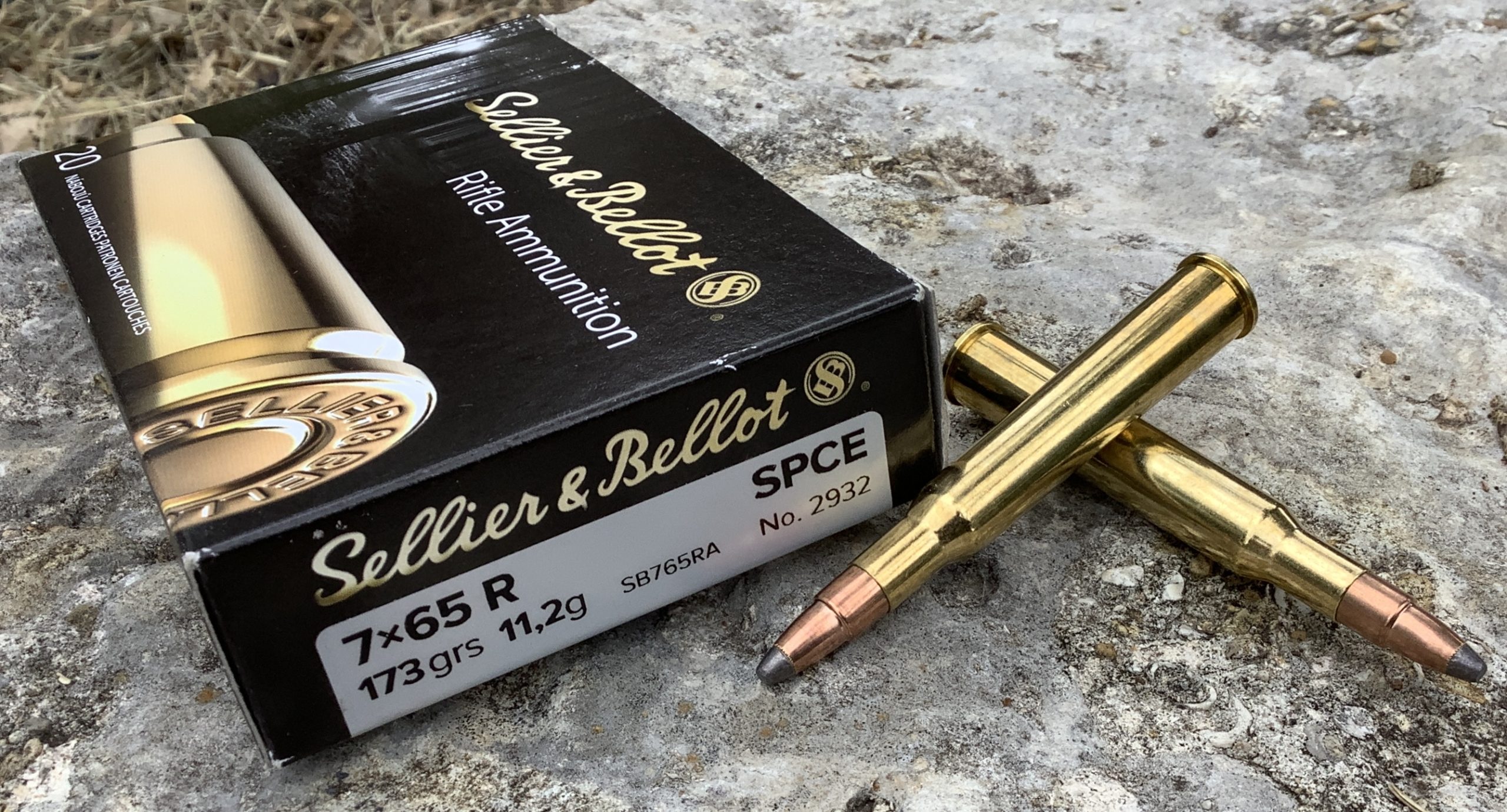
The Merkel had a 1-4x scope and was more than adequate accuracy-wise out to its zero range of 250 yards. A Burris RT1 optic is right at home on the Marlin and it was zeroed 1.5 inches high at 50. Trajectory was further verified to be about 2 inches high at 100. More range was not available so 100 yards would have to work, and I would chronograph later. By my figuring it was roughly a 150-yard zero. I set my tripod shooting sticks up for a long shot. This proved problematic later on.
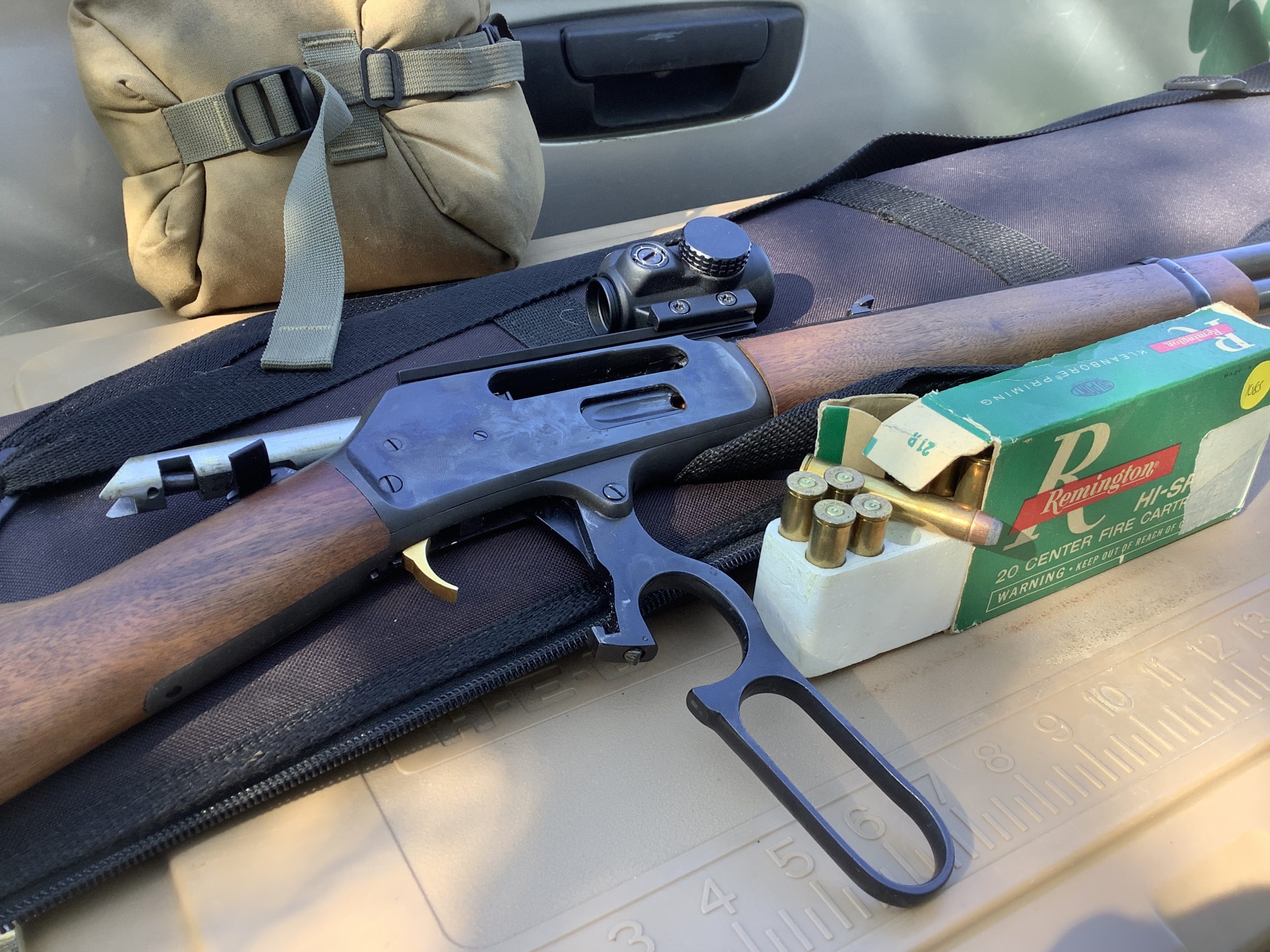
The Moment Arrives
We had been sitting no more than 20 minutes when a couple of does walked into the pond. A nice buck still in velvet followed. They came in and would drink at the pond no more than 70 yards in front of us. As they walked back the way they’d come, I picked up a rusty brown animal. It was coming in through the brush about 100 yards away. Quickly grabbing my binos and whispering to my friend,…… ”nilgai”, I checked for cow status. She would browse on leaves as she made her way closer, having verified it was a cow. I ranged her at 78 yards, dropped the binos, and reached for the Marlin.
SEE MORE: Peak Rut Elk Hunting Strategies
The distance closed quickly as she left the sparse cover and entered the open grassy area. I was concerned she would pick up movement or notice something out of place. As she walked broadside I waited for her front leg to clear her chest. I placed the red dot 5 inches or so from the bottom of her chest, and fired.
Adapt and overcome
She bucked as the bullet landed, she would later prove to be about 50 yards away on the first shot. Quickly, I levered another round into the Marlin and swung as she ran. Then just as I was firing, the gun ran into the already set up shooting sticks. I saw the red dot when the gun went off and called the shot a complete miss. I also noticed blood leaving her chest from the first round’s impact. Levering another round in and avoiding the shooting sticks. I was able to place another round in her just as she made the mesquite brush line. This shot was slightly raking and landed about 6 inches from the first, and was approximately 60 yards distance.
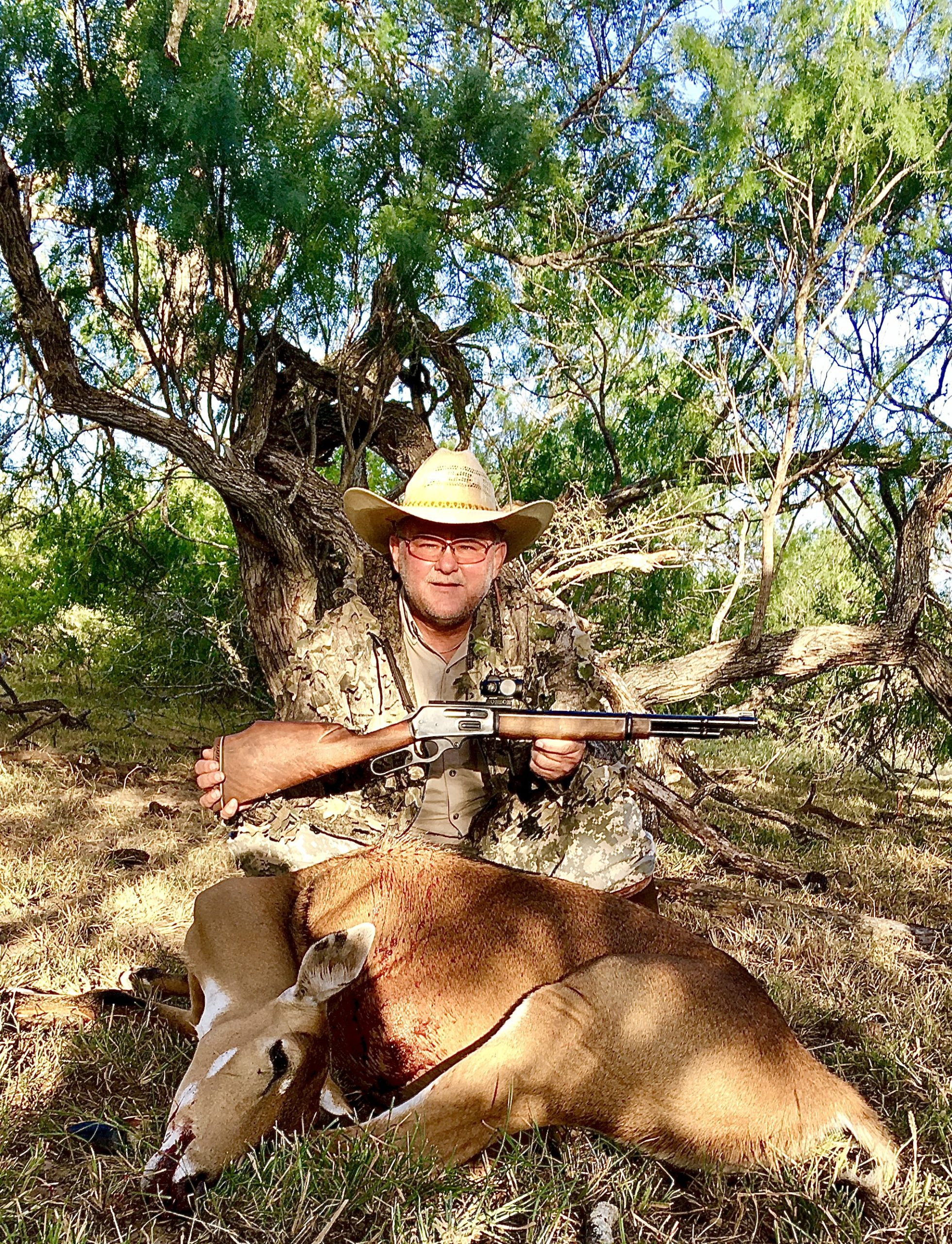
Success
I quickly got up and went to look for blood where she ran into the brush. As I was getting to the last marked spot where she ran in. I saw her kick as she lay on the ground just inside cover. I eased up from behind her, found a small stick, and gently touched her eye to verify death. The kick was a death throes involuntary spasm. She laid with her left side exposed clearly showing the two entry holes from the 444. I rolled her over to check for exits, but there were none. A small lump just beside her front leg would later prove to be the second bullet from the raking shot.
I found the first round just under the hide in the rib cage. I later weighed each and got 161gr. and 181gr. Both had broken ribs going in creating 1.5” to 1.75” entry holes and missing ribs on the way out. We used a small winch mounted in the bed of the truck for loading her. After pictures and loading we were on our way back to camp for celebratory snacks and cold beverages.
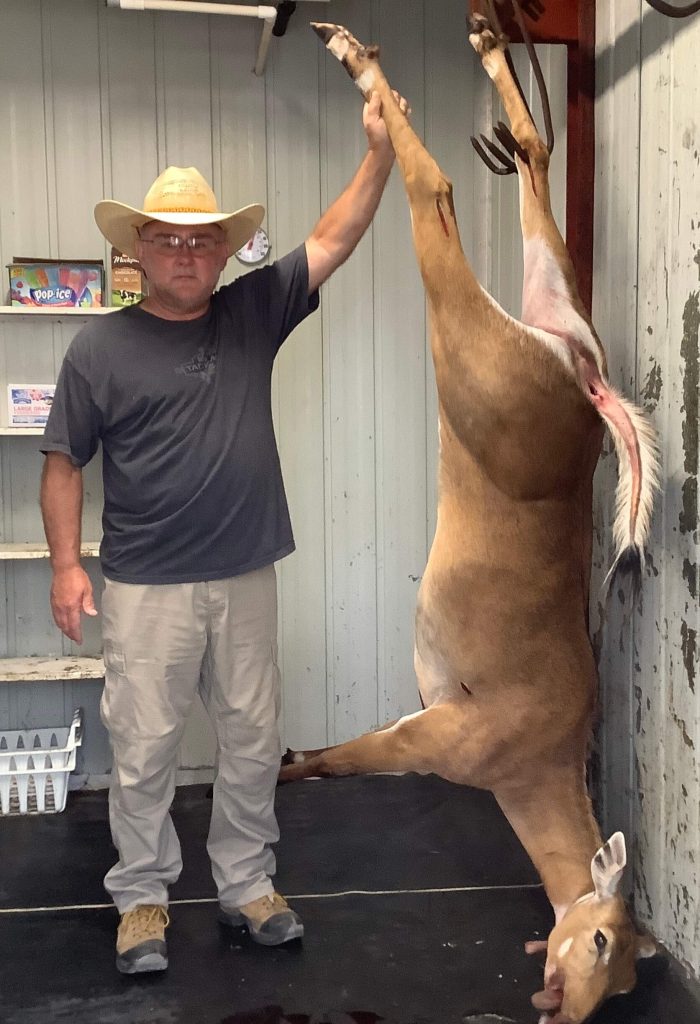
Conclusion
The next day I would take the time to put two rounds over the chronograph from the old Remington ammo. I was expecting 2100fps, but given the short barrel, I was not expecting 2383 and 2394fps. I did prove long-range shooting is not required for Nilgai. As always a good bullet placed properly will still kill even the hardiest of animals.